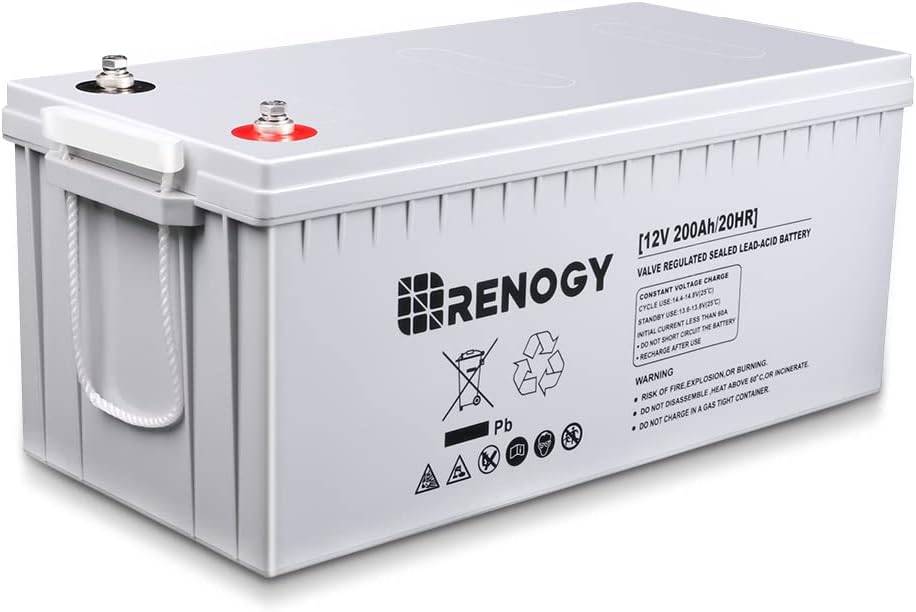The Renogy AGM Battery is a reliable and efficient power storage solution designed to meet the needs of various applications. Whether you’re powering an off-grid cabin, a recreational vehicle, or a backup power system, this AGM battery offers a high capacity and exceptional performance. In this review, we will discuss the key features, benefits, and limitations of the Renogy AGM Battery.
Key Features:
The Renogy AGM Battery is a 12-volt deep cycle battery with a capacity of 100Ah. It utilizes Absorbent Glass Mat (AGM) technology, which provides superior performance and longevity. The AGM design ensures that the electrolyte is suspended in fiberglass mats, preventing leaks and allowing for a maintenance-free operation. This sealed construction makes it safe to use in various positions, including on its side.
Reliable Power Storage:
One of the standout features of the Renogy AGM Battery is its ability to deliver consistent and reliable power. With its deep cycle design, it can withstand multiple charge and discharge cycles, making it ideal for long-term use. The battery also boasts low self-discharge rates, ensuring that stored power is preserved for longer periods. This makes it an excellent choice for off-grid applications where a consistent power supply is crucial.
Easy Installation and Maintenance:
Installing and maintaining the Renogy AGM Battery is hassle-free. It comes with two M8 x 1.25 x 16 mm terminal bolts, making it easy to connect to your system. The sealed design eliminates the need for regular maintenance, such as checking electrolyte levels or adding water. This battery also has a long service life, allowing you to rely on it for extended periods without worrying about replacement.
Versatility and Compatibility:
The Renogy AGM Battery is compatible with a wide range of systems and appliances. Whether you’re using it for solar power storage, as a backup power source, or in a marine application, this battery can handle the demands. It can be connected in series or parallel, offering flexibility in designing your power system. However, it’s important to ensure that all connected batteries have the same capacity, voltage, and battery type for optimal performance.
Renogy AGM BatteryTemperature Considerations:
The Renogy AGM Battery has a temperature range for optimal operation. It can handle discharge temperatures from -4°F to 140°F (-20°C to 60°C) and charge temperatures from 32°F to 122°F (0°C to 50°C). Operating the battery outside these temperature ranges may shorten its lifespan. If using the battery in extreme temperatures, it’s recommended to monitor and adjust usage accordingly.
Limitations:
While the Renogy AGM Battery offers exceptional performance, it does have a few limitations to consider. It’s important to avoid discharging the battery below 50% to maintain its cycle life. Additionally, the battery’s capacity is 100Ah, which may not be sufficient for applications that require higher power storage. In such cases, connecting multiple batteries in parallel may be necessary.
FAQs:
1. Do they come with the terminal bolts? If not, what size do they take?
– This Renogy AGM battery comes with two M8 x 1.25 x 16 mm terminal bolts.
2. Can I connect batteries in series and in parallel?
– Yes, you can. The maximum number that can be connected in parallel is 4. In series, there are no limitations.
3. Can I connect a 100Ah battery to a 200Ah battery?
– No, you can’t. All the batteries you connect together should be the same capacity (Ah), the same voltage (V), and the same battery type (AGM). It is recommended to use batteries from the same brand.
4. What’s the best way to place and store this battery?
– It’s recommended to place the battery upright, but it can also be installed on its side if necessary. Store the battery in a dry and cool place, within a temperature range of -4°F to 140°F (-20°C to 60°C). Ensure it is fully charged before storage and recharge every three months.
5. Can I discharge the battery to 0% and then recharge it again?
– To maintain the battery’s cycle life, it is recommended not to discharge it below 50%. Before storing, it’s advisable to charge the battery to 100% and recharge it every three months when not in use.
Related Posts
- Will a 12V Charger Charge a 36V Lithium Battery? An In-Depth Analysis
- Why Might Button Cells Have Quality Issues?
- Why LifePO4 48V Batteries Are Best for Deep Cycle Use
- Why Is Buying CR2032 Safer at Brick-and-Mortar Stores?
- Why Choose a 24V LifePO4 Battery?
- Why 48V LifePO4 Batteries are Ideal for Solar Systems





























